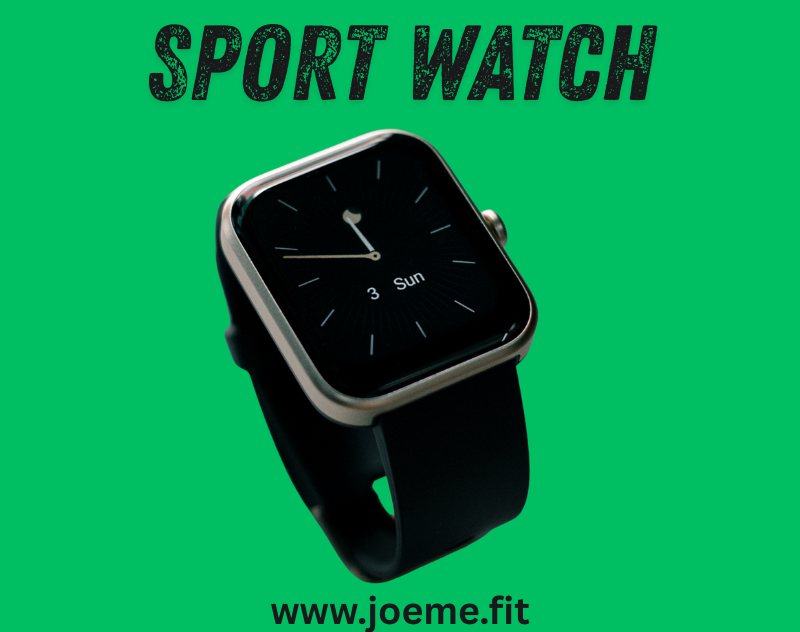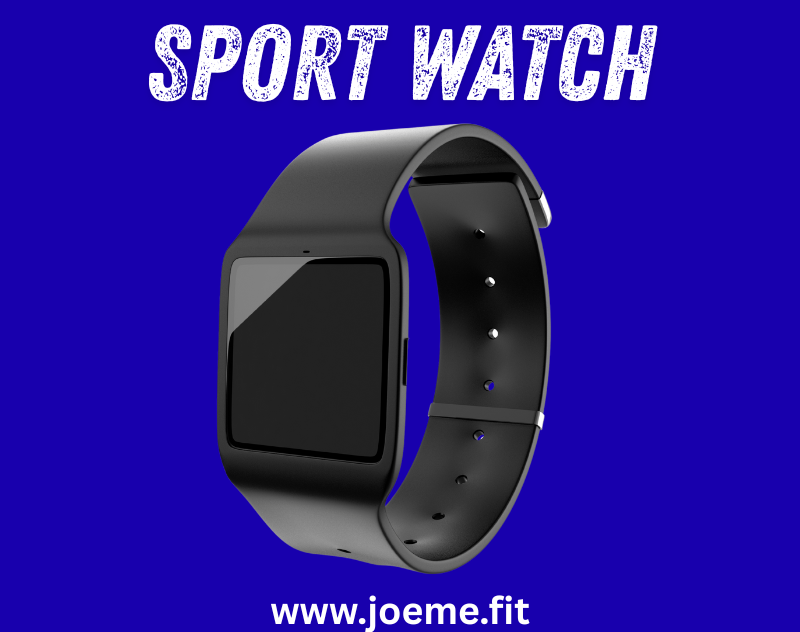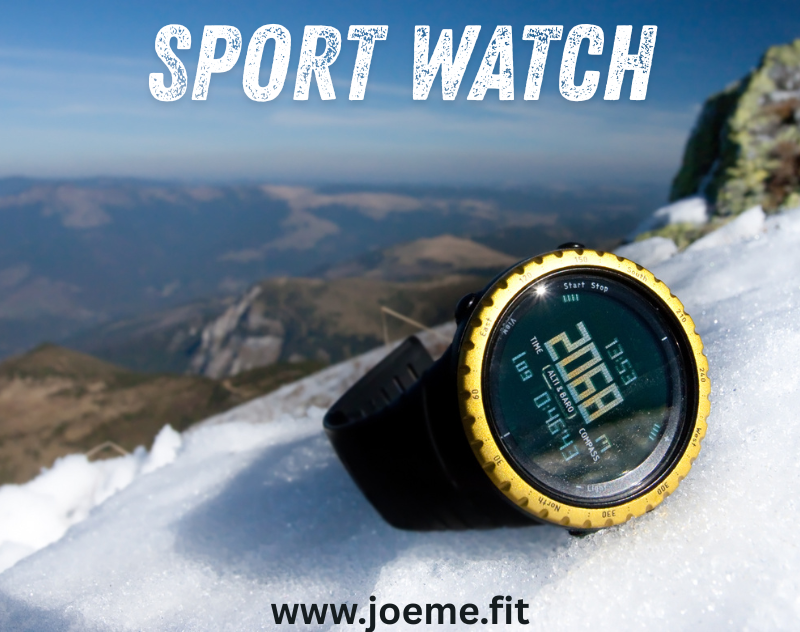When it comes to fitness, most people focus on what workouts to do, how long to train, or what diet to follow. But one area that often gets overlooked is how efficiently you’re training. You could be putting in hours every week, but without accurate tracking or feedback, you might be wasting effort on things that aren’t helping you improve. That’s where a sport watch can make all the difference.
A sport-watch isn’t just a timer or a step counter. It’s a real-time data tool that tracks your heart rate, pace, sleep, recovery, calories, and more. It helps you understand your body, avoid overtraining, and get the most out of every session. Whether you’re running, cycling, lifting weights, or doing HIIT, a sport-watch gives you the information you need to train smarter, not longer. You don’t need to be a professional athlete to benefit—just someone who wants to improve performance without wasting time.
In this guide, we will explain the practical ways a sport watch can boost your exercise efficiency and help you reach your fitness goals faster.
Sport Watch Ways to Improve Your Exercise Efficiency

A sport watch isn’t just a stylish gadget. It’s a tool designed to improve how you train, recover, and progress. Whether you’re running, lifting, cycling, or doing any other workout, using a sport watch helps you make the most of your time and effort. In this guide, we will explore practical and straightforward ways that a sport watch can improve your exercise efficiency. This includes real-time data tracking, optimizing heart rate zones, better planning, and smarter recovery. Visit here!
Heart Rate Zone Training
Training with heart rate data helps you stay within specific intensity zones. These zones tell you whether you’re burning fat, building endurance, or pushing anaerobic limits. A sport-watch can identify these zones automatically and alert you when you’re going too hard or not hard enough.
Heart Rate Zones:
| Zone | Intensity Level | Purpose |
|---|---|---|
| 1 | Very Light | Warm-up, recovery |
| 2 | Light | Fat burning, endurance |
| 3 | Moderate | Aerobic fitness |
| 4 | Hard | Performance improvement |
| 5 | Maximum | Sprint, high-effort bursts |
By training in the right zone, you avoid wasting energy and get closer to your goals more efficiently.
ace and Distance Tracking
Knowing how fast and how far you’re moving helps you measure performance clearly. A sport watch uses GPS to track pace and distance accurately, showing how consistent or varied your speed is across your workout. This helps runners and cyclists manage effort levels and set realistic pace targets.
Benefits:
- Adjust training speed in real time
- Avoid burnout by pacing properly
- Set personal records based on past performance
Recovery Monitoring
Exercise breaks the body down. Recovery builds it back stronger. A sport-watch monitors recovery using sleep tracking, heart rate variability (HRV), and rest time suggestions. When your body isn’t ready, your sport watch alerts you to reduce intensity or take a break.
Recovery metrics often include:
- Sleep duration and quality
- Daily stress level
- HRV (Heart Rate Variability)
- Resting heart rate
This helps you avoid overtraining and train when your body is truly ready.
Real-Time Workout Feedback
Instead of guessing if you’re doing enough, a sport-watch gives instant feedback. You can monitor heart rate, reps, sets, calories burned, and time spent in various zones while working out.
Advantages:
- Make adjustments mid-workout
- Stay within your workout plan
- Prevent undertraining or overexertion
Calorie Burn Accuracy
Estimating calories burned manually is often inaccurate. Sport watches track your calorie burn based on your heart rate, workout type, weight, and duration. This helps users make informed decisions about eating, recovery, or adjusting training volume.
More accurate calorie data supports:
- Fat loss goals
- Energy balance planning
- Nutritional timing
Customized Workout Plans
Many sport-watch include coaching features or can sync with apps like Garmin Connect, Polar Flow, or Apple Fitness. These generate custom workout plans based on your goals and performance data.
Benefits of customized plans:
- Adapt to your progress
- Align with your fitness goals
- Provide structure and routine
Goal Tracking and Motivation
A sport watch lets you set and monitor goals like steps per day, weekly distance, or monthly workout time. By tracking goals visually, you stay more consistent and focused.
Motivational features:
- Achievement badges
- Weekly/monthly summaries
- Daily reminders to move or hydrate
Sleep Tracking for Recovery
Good sleep supports muscle repair and energy levels. Sport-watch track how long and how well you sleep. Some also show time spent in light, deep, and REM sleep.
How sleep tracking helps:
- Adjust bedtime habits
- Align training with recovery
- Identify poor sleep patterns that affect performance

Multi-Sport and Mode Switching
Most modern sport watch support multiple workout types. Whether you’re swimming, hiking, weight training, or doing yoga, your watch adjusts metrics to fit the activity. This ensures more accurate tracking.
Common sport modes include:
- Running
- Cycling
- Swimming
- Rowing
- Strength Training
- HIIT
Switching between modes keeps all workouts logged accurately and improves total-body efficiency.
Daily Readiness and Body Energy Level
Features like Garmin Body Battery or Fitbit Daily Readiness analyze how ready you are to train based on sleep, recovery, and stress. When your readiness is low, the watch recommends light movement or rest. When it’s high, it suggests training harder.
Daily readiness helps you:
- Avoid injury
- Plan tough sessions wisely
- Recover when needed
Stress and Breathing Monitoring
Stress affects recovery and performance. Sport watches monitor stress using heart rate and breathing rate. Guided breathing sessions help bring stress levels down.
These features support:
- Mental focus during workouts
- Better sleep
- Lower resting heart rate over time
Long-Term Progress Trends
Tracking workouts over weeks or months shows clear trends. Sport-watch apps let you review charts and graphs for performance, recovery, pace, or heart rate trends. This helps adjust goals and training blocks.
Examples:
- Running pace improving month to month
- Resting heart rate dropping as fitness improves
- VO2 max increasing gradually
Safety and Emergency Features
Some sport-watch include features like fall detection or live location sharing during outdoor workouts. These are helpful especially for solo runners, hikers, or cyclists.
Safety tools include:
- LiveTrack or location sharing
- SOS emergency alerts
- Auto pause and resume
Battery and Workout Time Efficiency
Knowing how much battery is left helps plan longer workouts or back-to-back training days. Many watches now have power modes to extend battery life while maintaining data tracking.
Efficient usage tips:
- Use GPS-only when needed
- Turn off music streaming if not in use
- Switch to low-power tracking modes on rest days
Water Resistance and Durability
Waterproof sport watch allow you to train in all conditions—rain, sweat, swimming, or wet environments. This means you never miss a workout because of weather.
Most watches offer:
- 50m water resistance (swim safe)
- Scratch-resistant glass
- Durable silicone straps
Common Sport-Watch Features Comparison
| Feature | Basic Fitness Tracker | Advanced Sport-Watch |
| Heart Rate Zones | Limited | Full Tracking |
| GPS Tracking | No or basic | High-accuracy |
| Sleep & Recovery | Basic | Detailed w/ HRV |
| Workout Modes | Few | Multi-sport support |
| Custom Plans | No | Yes |
| Battery Life | 3-5 days | 5-14 days |
Q&A Section
Do I need a sport-watch if I already use a gym app?
Yes, a gym app tracks workouts, but a sport watch adds real-time metrics like heart rate, calories, and recovery, which gym apps can’t track on their own.
Are sport-watch suitable for strength training?
Yes. Most modern watches track reps, sets, and heart rate, and some include strength-specific workout modes.
How accurate are sport-watch for calorie burn?
They are more accurate than manual estimates because they use heart rate, workout duration, and personal metrics. Still, expect small variations.
Can sport-watch replace personal trainers?
They don’t replace trainers but can complement training by tracking data and providing structured plans.
Is it worth buying a sport-watch for beginners?
Absolutely. Even beginners benefit from better pacing, recovery monitoring, and building consistent habits early.

Conclusion
Improving exercise efficiency isn’t about training harder—it’s about making every workout count. A sport watch helps you do exactly that. From tracking your heart rate zones to monitoring your recovery, it provides real-time data that takes the guesswork out of fitness. You can see what’s working, what’s not, and adjust on the spot. Instead of relying on generic plans or just “pushing through,” you get insights that are specific to your body and performance.
With features like GPS, sleep tracking, calorie burn analysis, and personalized workout suggestions, sport-watch give you the tools to train smarter, avoid injuries, and stay consistent. Whether you’re a beginner aiming to build healthy habits or an experienced athlete trying to break through a plateau, a sport-watch turns effort into progress with better clarity and control.
Efficiency is the key to long-term success, and your sport-watch is one of the simplest ways to stay focused, balanced, and motivated. So if you’re serious about results, don’t just track time—track performance. Let your data guide your next move.